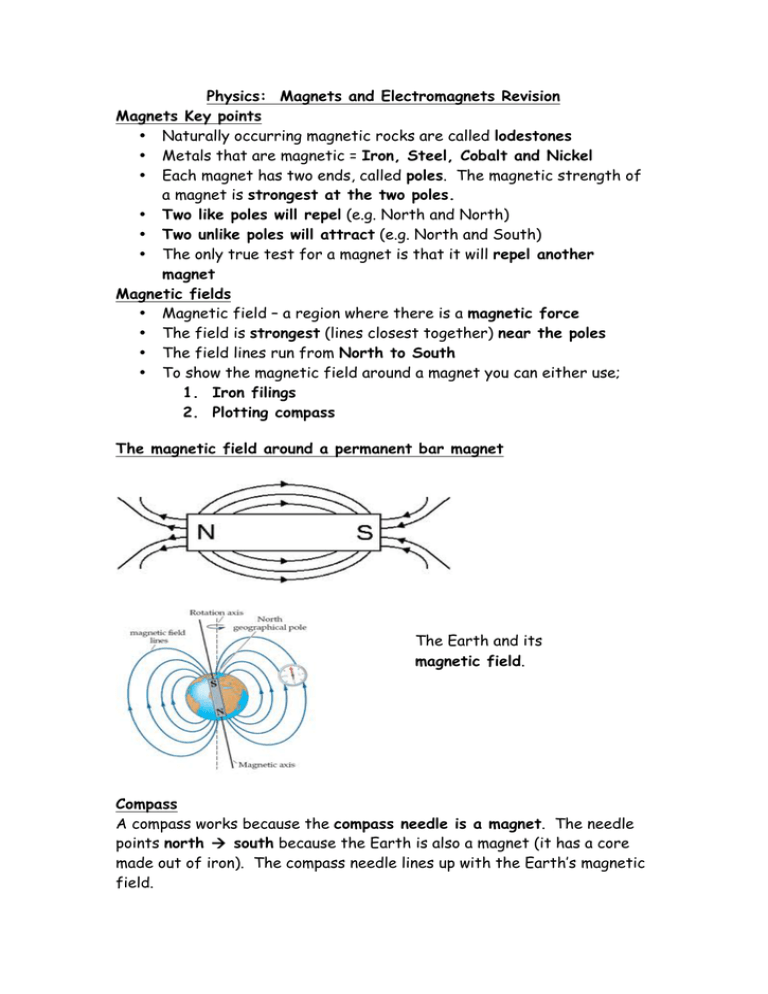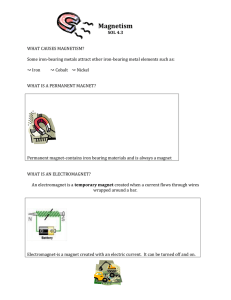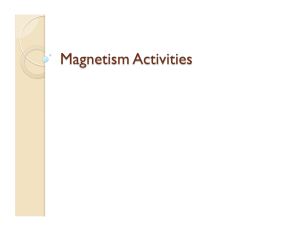Physics Magnets and electromagnets revision
advertisement

Physics: Magnets and Electromagnets Revision Magnets Key points • Naturally occurring magnetic rocks are called lodestones • Metals that are magnetic = Iron, Steel, Cobalt and Nickel • Each magnet has two ends, called poles. The magnetic strength of a magnet is strongest at the two poles. • Two like poles will repel (e.g. North and North) • Two unlike poles will attract (e.g. North and South) • The only true test for a magnet is that it will repel another magnet Magnetic fields • Magnetic field – a region where there is a magnetic force • The field is strongest (lines closest together) near the poles • The field lines run from North to South • To show the magnetic field around a magnet you can either use; 1. Iron filings 2. Plotting compass The magnetic field around a permanent bar magnet The Earth and its magnetic field. Compass A compass works because the compass needle is a magnet. The needle points north à south because the Earth is also a magnet (it has a core made out of iron). The compass needle lines up with the Earth’s magnetic field. Electromagnets • Make an electromagnet by wrapping a coil of wire (solenoid) around an iron core. • The field pattern around an electromagnet is the same as that around a bar magnet, as shown below Advantages of an electromagnet: • You can switch an electromagnet on or off • You can change the magnetic strength of an electromagnet by 1. Increasing the electric current 2. Increasing the number of coils in the solenoid 3. Making sure the core is made out of iron Uses of an Electromagnet • Electromagnets are used in medicine To remove metal splinters (e.g. shrapnel) To look inside the body, using Magnetic Resonance Imaging (MRI) • • An Electric Bell Magnetic trains – electromagnets allow the trains to ‘float’ above the track. This gives a smooth ride, and reduces wear on the track due to less friction.

